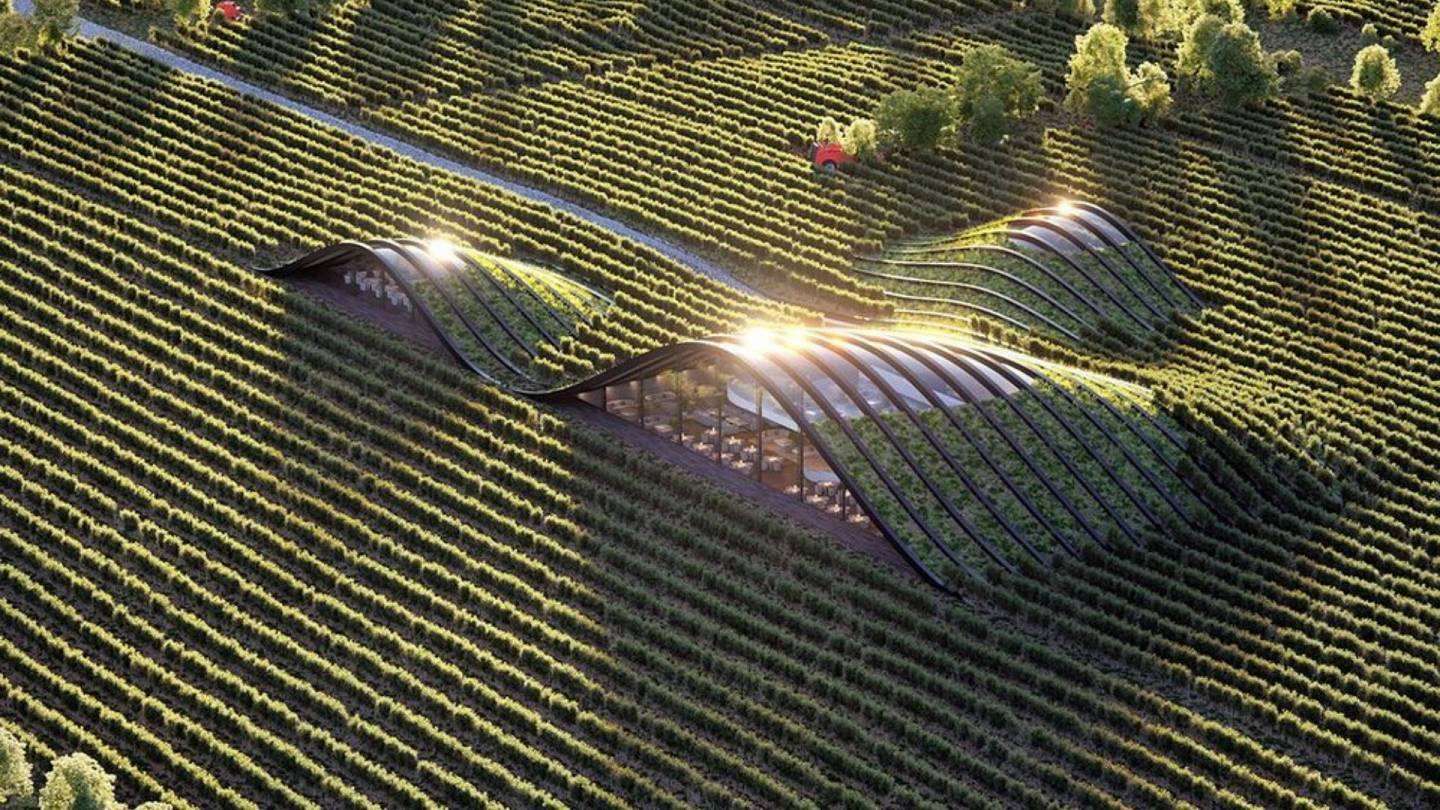Join thousands of people who organise
work and life with Novatr.
11 Best Sustainable & Eco-Friendly Building Materials in Use Today
Thet Hnin Su Aung
12.7mins read
September 13
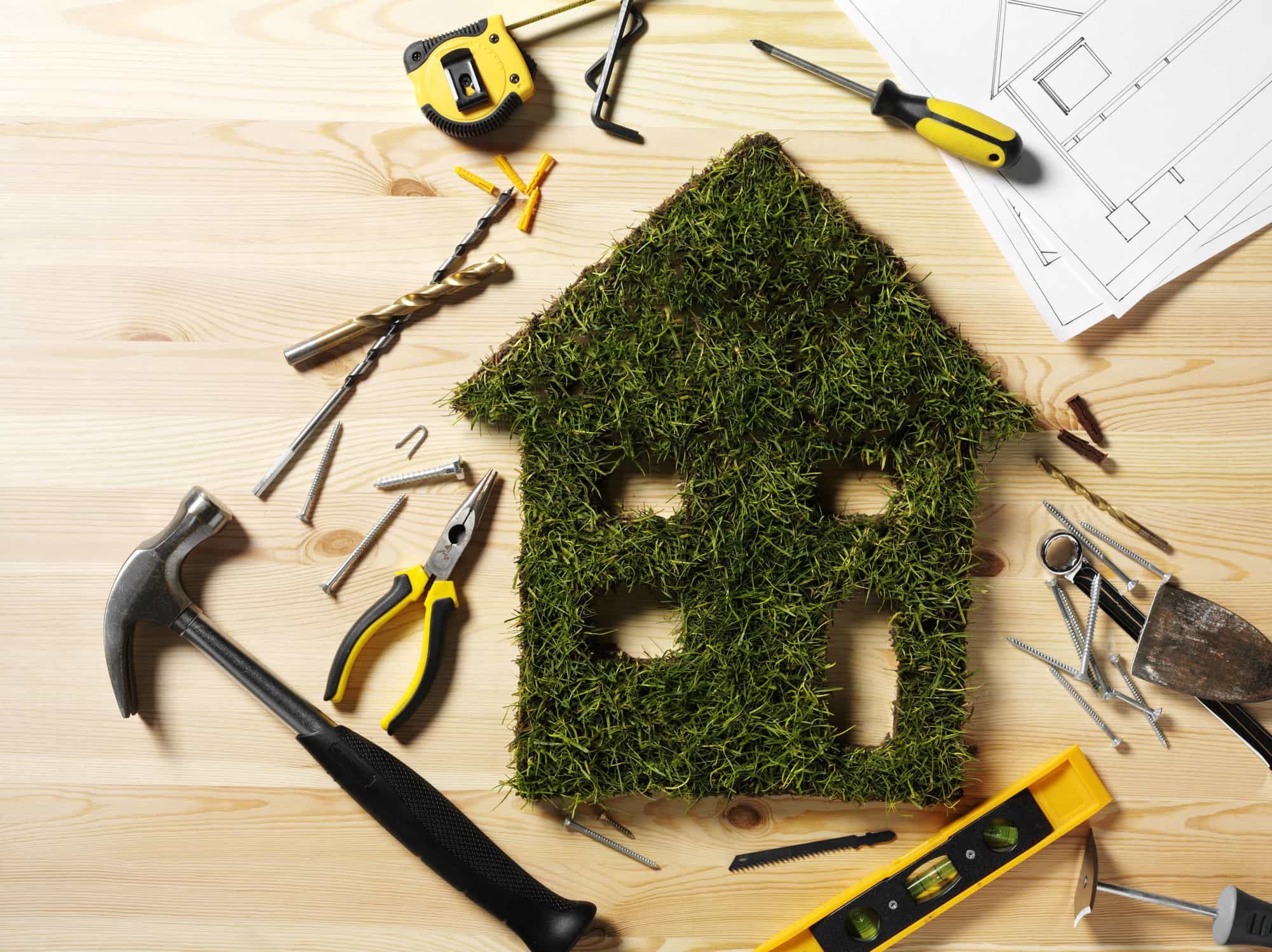
The Industry’s Need of the Hour
In 2019 alone, the building construction industry was responsible for 38% of global CO2 emissions, recording almost 10 gigatonnes. Needless to say, our industry is among the biggest contributors to the causes of ozone depletion and global warming. As if that has not caused enough damage, the construction industry has relied on non-renewable resources for products that are also environmentally toxic.
With this crisis unfolding worldwide, architects and engineers have now taken up the challenge of designing sustainably following relevant ecological guidelines. One of the many ways we can help combat this crisis is by using sustainable materials. Using such materials as part of the overall sustainable design solution can help mitigate the environmental damage inflicted by the AEC industry by reducing the carbon footprint and reliance on non-renewable resources.
What is a sustainable material?
Using sustainable materials is one of the core practices when designing green buildings. But how do we define a 'sustainable' material? Many people tend to think the term is interchangeable with 'recyclable' materials. However, being recyclable is only one characteristic of a sustainable or ecological material. We can now recycle and reuse several materials, be it in construction itself or in other products, to reduce our carbon footprint and reliance on non-renewable resources.
The other characteristic defining sustainable materials is that they do not deplete non-renewable resources or disrupt the natural environment during production. So, concrete, steel or plastic may not be eco-friendly construction materials but we can reuse them to reduce further production.
11 sustainable materials used in construction
1. Cork
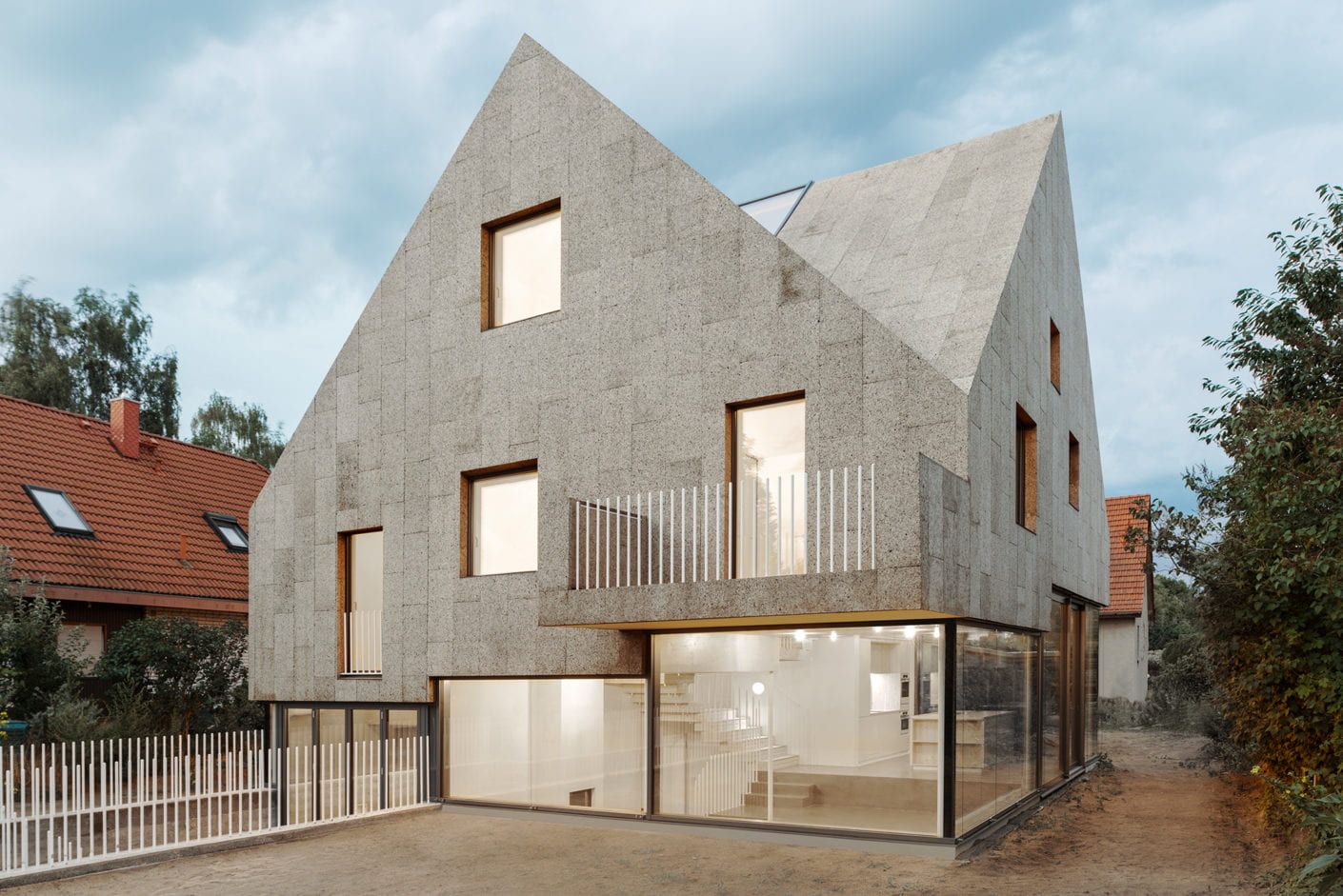
Cork Screw House By Rundzwei Architekten (Source: www.stylepark.com/en)
Often associated with wine stoppers and bulletin boards, cork can actually be used as a construction material. Its many sustainable features are still unknown to many. The cork we use comes from cork oak trees, which can survive for around 200 years. During its lifespan, a tree can produce some hundred kilograms of cork, making it one of the most renewable sources. Stripped from the tree barks, it is then processed to produce the cork to be made into boards or stoppers. Nowadays, architects are showing interest in this material as it is recyclable, water resistant, lightweight and thermally efficient.
2. Recycled steel
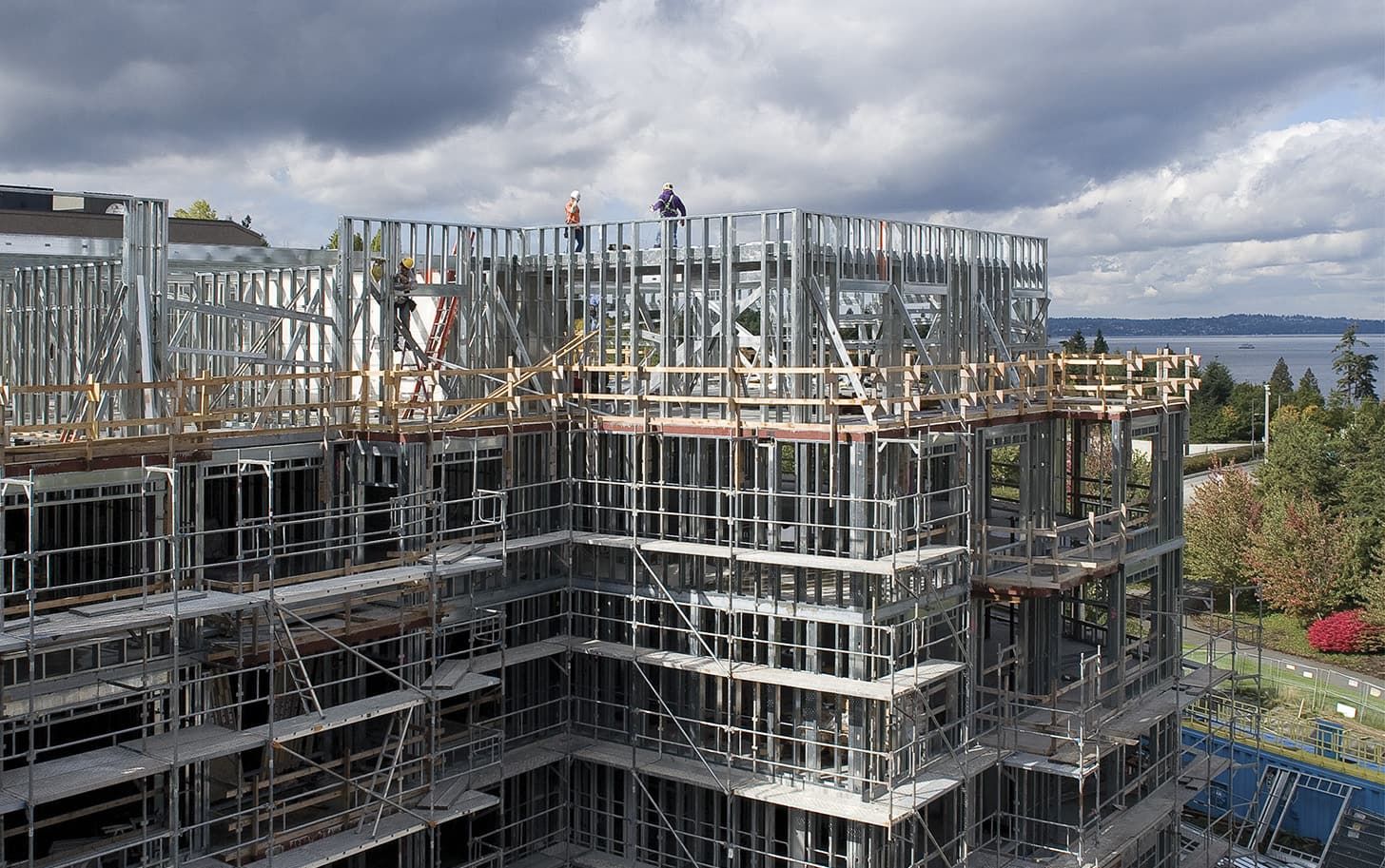
Construction with recycled steel (Source: https://buildsteel.org)
As one of the most commonly recycled materials, steel has proved to remain usable without losing its properties. Still strong and durable, it can be as useful as any new steel for construction. By recycling reclaimed steel, we are able to save natural resources while reducing the huge amount of energy and pollutants from the extraction and production. The energy used in the recycling process is less than a regular production process as raw materials are already processed.
3. Recycled or Reclaimed wood
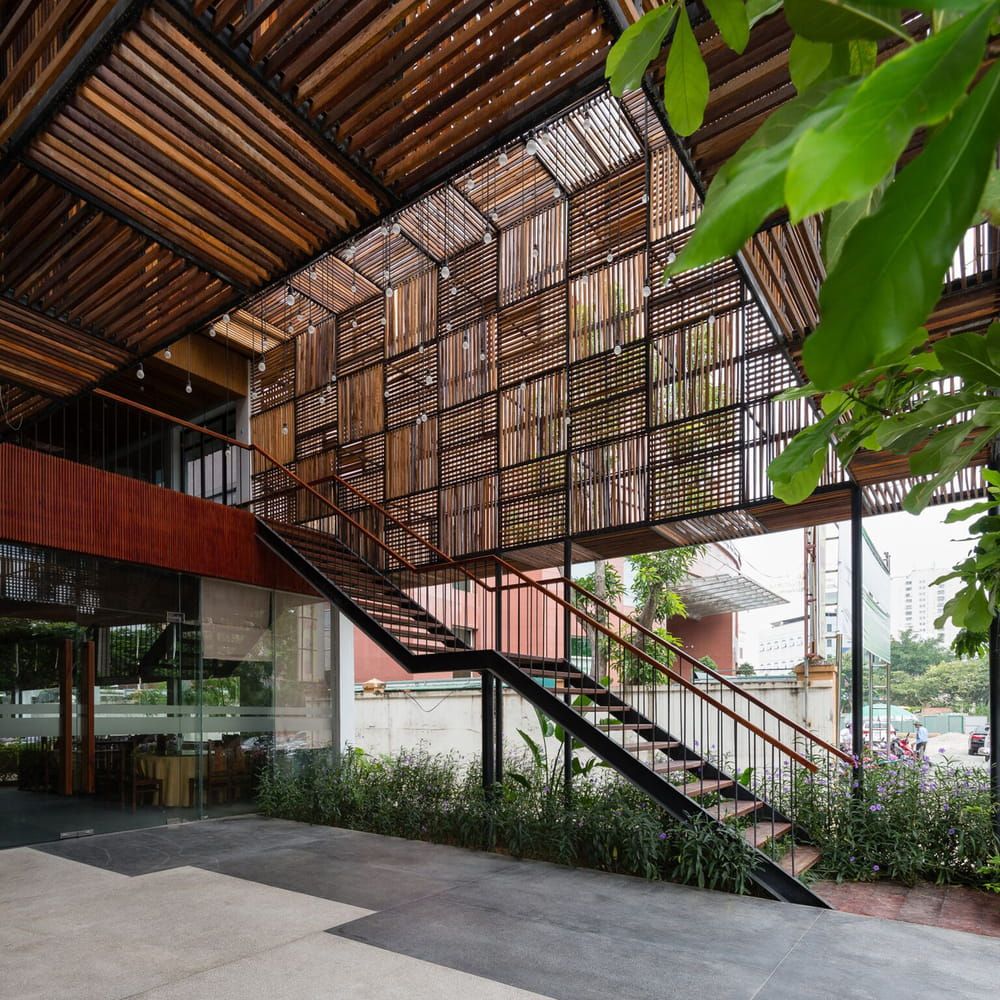
Reclaimed timber in the Saigon Thuong Mai hotel (Source: www.archdaily.com)
You can’t go wrong with wood; it is easy to use, especially with proper care, and with the right aesthetic can make for some rather pleasing architectural elements. But how do we make its use sustainable? With proper management, wood can be a renewable resource. However, we must ensure not to rely on new wood or our usage can overtake its growth rate. One easy solution is to recycle reclaimed wood. We can already see this practice with upcycled furniture. By recycling wood, we can lower deforestation and indirectly promote biodiversity and carbon capture.
4. Bamboo

The Ulaman Eco-Retreat Resort (Source: www.yankodesign.com/)
A popular material for both architecture and industrial design, bamboo has been used for construction as a sustainable building material by many architects.
Its fast growth rate and abundance make it an environmentally and economically sustainable material. In fact, bamboo is known to be one of the fastest-growing plants in the world. It is also lightweight and flexible to shape with the proper technique. Combined with computational means, bamboo can be used to construct strong and stunning structures.
5. Hempcrete

Interiors of Pierre Chevet sports centre (Source: https://www.dezeen.com/)
Hempcrete usually comes in blocks, produced from a mix of hemp fibre and lime. Hempcrete has been deemed as a carbon-negative material due to its higher absorption of carbon dioxide than emission (usually from production). Hemp fibre works similarly to timber except it grows faster and therefore can be replenished easily. Hempcrete blocks are lightweight and flexible to design and also work well as an insulator. Thus hempcrete indirectly further reduces the need for energy consumption for heating or cooling.
6. Mycelium
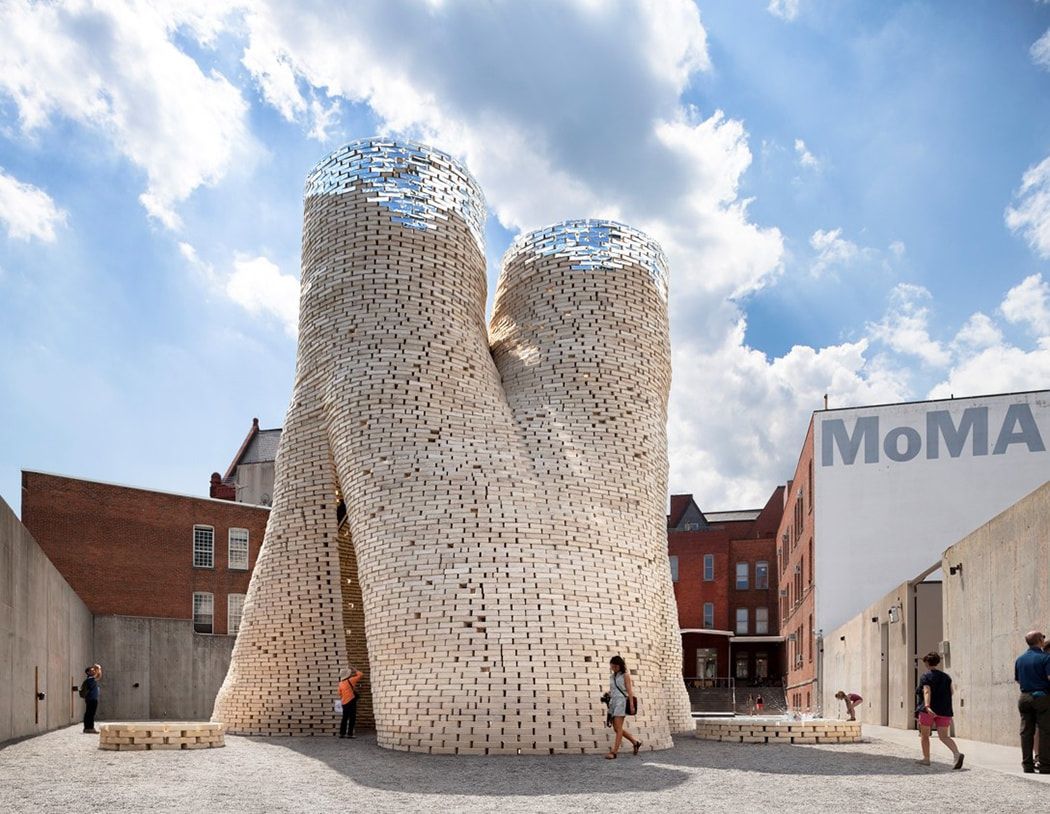
Hy-Fi project using mycelium by The Living studio (Source: www.certifiedenergy.com.au)
Mycelium has been explored as a potential sustainable construction material in the recent few years. It is a fungal material, more specifically made from the root-like fibres of the fungi. If developed and used the right way, it can become one of the most innovative green materials due to its organic and biodegradable properties as well as it being insulating and non-toxic to both users and the environment. That’s not all – it is lightweight and resistant to fire and water. Mycelium is now being used in several industries including packaging and fabrication.
7. Rammed earth
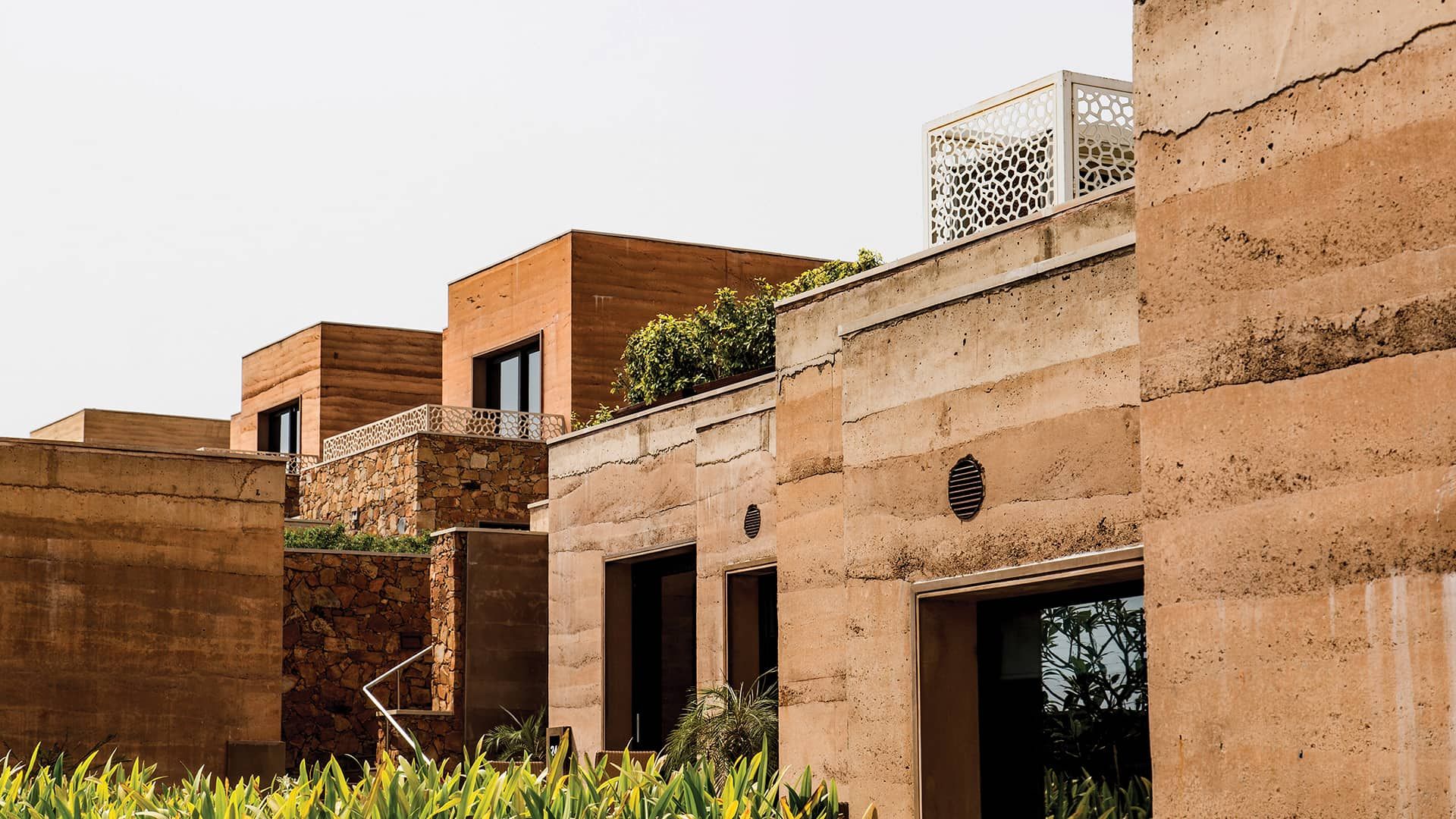
Rammed earth architecture of Lalit Mangar Hotel (Source: www.stirworld.com/)
Buildings in rammed earth, dating back centuries, can be found in many parts of the world. To this day, it is considered an abundant, and sustainable resource for building material. With the right type of earth for such constructions, rammed earth buildings can have a low carbon footprint since the earth excavated from the site can be used, leaving little or no need for transportation. Using low carbon materials such as rammed earth can decarbonise the environment. A similar material is mud, which many modern architects have experimented with.
8. Biocomposite cement

A biocomposite cement block (Source: www.dezeen.com/)
Technology has become so advanced that we can now produce masonry blocks with materials grown from algae! Certain kinds of algae are able to naturally produce cement-like material. The result is a low-carbon material with similar properties to cement used in construction. This is still largely in the testing processes and not widely used in the industry yet but could soon be one of the leading materials to help achieve net-zero buildings.
9. Recycled plastic

Impact Acoustic's Chatpod 700 booth by Jeffrey Ibañez (Source: www.dezeen.com/)
Plastic material is a pressing environmental threat polluting much of the earth and the oceans, owing to high usage and low recycling rates. Many artists and designers have taken up the challenge of using recycled plastic in their products. Although this may just be a small collective effort, as the recycling reaches industrial level, this practice may soon prove effective along with reduced reliance on plastic, of course.
10. Terrazzo

Green Terrazzo tiles (Source: https://interiordesign.net/)
Terrazzo is a recycled material used commonly as floor tiles. Not only is it aesthetic with colourful fragments, but also sustainable as it is made from scraps of marble and glass chips in cement. This material is nothing new; it has been used since the ancient Roman times but was popularised in the 18th century. The terrazzo we use now is an upgrade of the old with better resistance to scratches and cracks. Ecological recycling is what makes terrazzo a sustainable material – even pieces of plastics can be recycled to become terrazzo.
11. Mud brick

Barzok Cultural Centre in Iran (Source: www.archdaily.com)
Mud bricks are an ecological material as they are usually made on site, or at least with the mud from the site. Thus, it reduces the need for more materials and transportation for them to be carried to the site. They are rarely made only with mud and water; other materials such as straw or even cement can be mixed in to reinforce its strength. As they are produced from mud on site, they are recyclable and non-toxic to the environment. They also have high thermal mass (the ability of a material to absorb and store heat), making it a good option in hot and dry locations. The only downside is that mud bricks need good insulation against water.
With the need for positive sustainable change in the industry long overdue, it is about time architects take more interest in sustainable architecture and its materials to counter the high carbon emissions of the built environment. We may not see the results immediately, but we can make definite strides towards making the Earth a better place to live in for future generations.
If you are interested to learn more about sustainability and architecture, head to our Resources page.
Join 100,000 designers who read us every month
